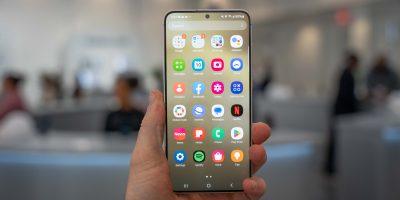Those who upgraded to Android 5.0 Lollipop on their Nexus 4 ran into a bit of trouble with its LTE radios. If you don’t remember, the Nexus 4 shipped with LTE radios inside, but the device was not approved for LTE use by the FCC here in the United States. As such, Google ended up having to disable the radios via a software patch.
That didn’t hold the community back from bringing support in an unofficial capacity, of course, but those who upgraded to the official Android 5.0 Lollipop firmware recently have found themselves in the same pickle. And, well, today’s development proves history repeats itself quite a bit: you can now get an updated hybrid modem to enable LTE on your Lollipop-equipped Nexus 4. You’ll have to be rooted, though that should be no big task with Chainfire’s latest goods.
Once you’ve taken care of root then it’s as simple as this:
- Flash EnableNexus4LTE.zip to “enable” LTE in the build.prop
- Flash this hybrid modem (in fastboot or recovery)
- Perform a full data wipe, or use these instructions if you’re knowledgeable on ADB to get the settings to stick
- Reboot
And that’s it. Not the most elegant solution out there, but if you’re not ready to loosen the grip on your Nexus 4 in favor of one of the newer devices then this is what you’ll have to work with. Be sure to back everything up before attempting this, and remember that anything you do on your phone is at your own discretion.
[via XDA, thanks Carl!]












Just don’t bother if you’re in UK / Europe as band 3 isn’t supported…
Or use thishttps://play.google.com/store/apps/details?id=me.bpear.makomodem
Any ideas on which of the 11 available modems to download and install if using my Nexus 4 on T-Mobile? (I’m still on 4.4.4 running a CM nightly. I haven’t made the jump to 5.0 yet.)
https://play.google.com/store/apps/details?id=me.bpear.makomodem any of the hybrid modems will work.
It wasn’t the FCC that prevented LTE, the phone was never meant to have LTE because they never included the antenna. The phone only had LTE radios because they were built into the Snapdragon 400 (which I think was the first time LTE radios were on the chipset).
I’ve seen this confusion about SoCs including radios since 2010 in the first Snapdragon, so let’s clear that up. ^.^
Actually, the built-in LTE capability first appeared in 2012 on one of S4 SoCs with the World Modem configuration (later called S4 Pro, etc etc, Qualcomm shifted the name quite a bit). That – like all Snapdragons with “radio” circuitry (an idea made popular by blogs) – only included the modem, and that’s how it’s always been.
http://www.cnx-software.com/wp-content/uploads/2011/10/qualcomm_snapdragon_s4_block_diagram.jpg
(from https://www.qualcomm.com/media/documents/files/snapdragon-s4-processors-system-on-chip-solutions-for-a-new-mobile-age.pdf )
While there is an option for the Snapdragon 400 to include the World Modem like most Snapdragons, the Nexus 4 used the Qualcomm S4 Pro without the modem, the APQ8064 – where AP=application processor, not including modem.
The Qualcomm MDM9215M 4G GSM/UMTS/LTE modem chip used in the Nexus 4 was separate – but separate or integrated with the SoC doesn’t address the other part of the puzzle – the radio transceivers – and on the Nexus 4, that was the Qualcomm WTR1605L Seven-Band 4G LTE chip.
So – wherever someone tells you that a processor contains a radio – take that with a huge grain of salt. They often include a modem but never the radio transceivers. Those, along with the antennas and some other circuitry are all required to make up a full radio – but the radio chips – always separate from the processor due to RF noise and economy of design.
Anyway – the Nexus 4 was clearly wired from the motherboard on up to support LTE.
Pictures or it didn’t happen – https://www.ifixit.com/Teardown/Nexus+4+Teardown/11781
Hope this helps on the whole radio/modem/processor thing.
As for what that whole LTE confusion was about – I have no clue, that never made a lot of sense to me.
Cheers!
Ah very interesting information, thanks. I admit I got a lot of my information from various blogs and reddit which I know isn’t the best way to be informed. One of the excuses I always heard about LTE and the n4 was there was no LTE antenna so if you didn’t have immaculate reception you’d likely not get any LTE. I decided to not bother with the LTE hacks because of that; I knew eventually I’d get the next iteration of the Nexus and I figured for sure it’d have full LTE support so I wasn’t to worried about not having it in the 4. That and HSPA+ 42 was really good in my area.
Thanks again for your information, I certainly learned something today. So in the case of like Nvidia and the Nexus 9 they mention one of their newest features is having LTE in their chip now which before required a separate modem I guess. SO really they have an onboard modem in their new chip, but they still require the external radios+antenna to have LTE just like everyone else. Well now I feel bad for writing off companies that didn’t have it on chip, unless there are performance or battery saving gains you get by not having a separate modem, in which case I’d be right to skip those devices.
Actually you get better battery performance and reliability putting the modems in with the processor. But the demand exceeded the supply so many turned to the 2 chip setup. Then again, I’m running a 2 chip configuration myself, the tech is so advanced that it’s probably safe to say that the battery difference is down in the noise.
I used the Nexus 4 LTE Modem Flasher app and just manually set it back to use LTE if and when I reboot.. not elegant but I don’t have to wipe data and with Lollipop I haven’t had to reboot really since the update so what’s flipping a switch every few months if a reboot happens.
Why was this not approved by the FTC?
Quick question, which partition do I use when flashing the EnableNexus4LTE.zip folder?